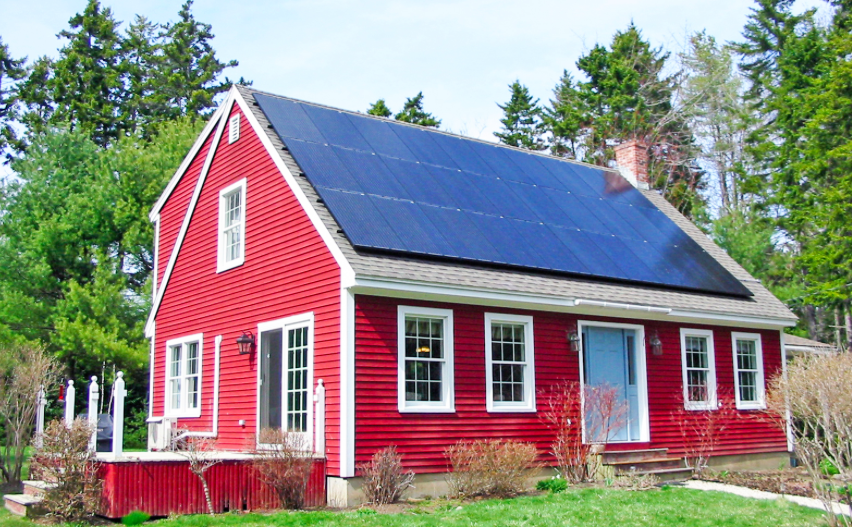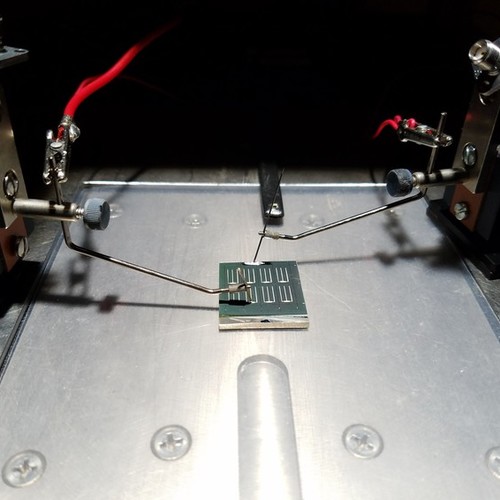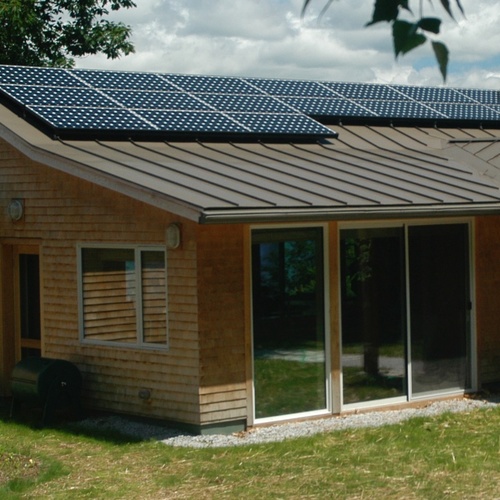
You may have heard that enough sunlight strikes the earth continuously to offset humanity’s energy needs by a factor of 10,000—that’s according to the U.S. Department of Energy. And ever since Bell Laboratories developed the first silicon solar cell in 1954, we have striven to produce more of our electricity from the sun. But despite efforts to generate power from the earth’s largest energy source, photovoltaics still account for less than 2% of the world’s electricity, according to the Center for Climate and Energy Solutions. The obstacles to increasing the adaptation of solar energy remain its high initial costs and low efficiency—or the cost-to-efficiency ratio. While sunlight is free, the U.S. Department of Consumer Affairs calculates the average price of a residential rooftop solar installation at $12,000, after deducting federal tax incentives. For many households, this sum remains prohibitive. One solution is to approach solar with baby steps.
Sam Rashkin, former chief architect for the Department of Energy’s Building Technologies Office and director of the EPA’s Eergy Star for Homes program, introduced the Zero Energy Ready Homes concept while at DOE. Sam’s idea was a home built to the highest performance standards so that a future solar installation could easily meet its energy demands. But if sunlight produces no carbon and comes without cost, why would a home require the highest level of energy efficiency? Because intrinsic limits to solar efficiency mean there’s little room for further improvement in terms of panel technology, so other avenues toward efficiency have to be explored, explained Dr. Eikenberry.
Why is solar energy efficiency limited?
During an hour-long interview, Dr. Eikenberry painstakingly walked me through the science of transforming photons into useful voltage. The process is based on the photoelectric effect, a mechanism Albert Einstein figured…
Weekly Newsletter
Get building science and energy efficiency advice, plus special offers, in your inbox.

This article is only available to GBA Prime Members
Sign up for a free trial and get instant access to this article as well as GBA’s complete library of premium articles and construction details.
Start Free TrialAlready a member? Log in















15 Comments
The reason we use AC power is because of it's advantages in transmission. A DC home just moves the AC to DC conversion inefficiency to the connection from the grid to the house. And it requires massive changes to the industries that make the devices and appliances in the homes and the commercial and residential electrical industries (e.g. wiring, breakers, switches, etc.). All that to save 10-20% at the plug for a few devices, which if coming from a PV source at 20% efficiency, is only a net improvement of 2-4%. And that's before we consider the AC to DC losses from grid to home.
I agree.. I don't ever see this happening.. We'd be far better off improving efficiency and reliability of the solar system components we use today and driving costs down further before thinking about switching to an all DC system.
The research paper on the potential benefits of converting to DC is interesting. However, if I am understanding it correctly, a big part of the benefit is that when you go to buy a dc-powered heat pump, your only choice is a modern high-performance unit. If you get the equivalent modern high performance unit, with the same electronically commutated motor (ECM), but with a rectifier ahead of the motor drive, you lose only about 1% efficiency. So the efficiency improvement, comparing equivalent systems, AC or DC, be more like 3-5%, not the 10-20% quoted here.
This article fails to mention bifacial solar panels which are now readily available. Bifacial panels have cells on both sides of the panel and are beneficial when you are able to mount them in a way that they can receive reflected sunlight from behind the panel as well..
"...bifacial solar panels which are now readily available."
Well, for utility- and commercial-scale, this is true. For residential use, not so much. And trying to use commercial panels on residential sites may not be feasible due to removal of warranty protection, and in some jurisdictions, outright denial due to code/permit restrictions.
Even if there's a residential site where use of the modules would be OK in terms of permitting and warranties, their feasibility would be questionable. They generally make sense on optimized ground-mount installations, which most homeowners won't contemplate.
All of these factors, combined with advances in the efficiency and reliability of monofacial residential panels that are better suited to standard rooftop installation, remove the incentives for the solar industry to focus at all on bifacial in residential settings. The few 60-cell bifacial modules introduced since 2016 -- and their rapid disappearance from the marketplace -- would seem to confirm the obstacles for this technology in all but utility-scale, and a few commercial applications.
There are bifacial modules manufactured by LONGi and for sale from a couple of online solar retailers in Arizona who I have both purchased from. They are also listed on the California Energy Commission's site as approved for residential installation.
Thank you, I'm aware of LONGi's LR4-60HBD product line. When I last looked, it was the only 60-cell bifacial product available in the US (and given the history of bifacial modules in that form factor, I wonder how long it will continue to remain available).
But the lack of broad product availablity is still only part of the problem. The larger part, IMHO, is that optimal bifacial siting is something the vast majority of homeowners will be unable and/or unwilling to do.
Don't get me wrong: I like bifacial technology and would use it on my residence if I could. But there are reasons it's at best a niche solution except in utility-scale and very large commercial environments.
There are many developing technologies, types of panels, and other means of utilizing solar energy. This is the scope of a book, not an article. One thing to know, most of the world uses DC power today, and most appliances are designed to receive either AC or DC precisely because they are sold internationally. The idea is not to change everything but to add a wiring system for DC to power certain things, such as LED lights, auto chargers, heat pumps. It would work the same way today we wire low voltage in some instances.
The field is evolving and the chief point is that we can apply efficiencies down the line as solar cells face natural limits to the power generated. This is why utility level solar requires massive geographic area rather than super-advanced panel types. Homes usually have limits.
Most of the world uses DC power? Do you have a reference for this? The only country I can find a reference for having a DC grid is Argentina.
https://legacy.trade.gov/mas/ian/ECW/all.html
Perhaps it would be more accurate to say that most areas of the world *that are not developed enough to have grid infrastructure* use DC...if electricity is available at all?
Solar and electrical experts of GBA:
What is the utility company rationale for requiring a long and tedious interconnection application process for, say, a 7kW residential rooftop solar install, when installing a 7kW car charger requires just a regular electrical permit? Assuming no need to upgrade service amperage in either case.
AMorley,
The two important differences I can think of are that unlike just increasing your electrical load, adding solar generation a) has the potential to continue back-feeding into the grid when power is out, which is a hazard. b) requires them to manage loads in a more complex way if their generation occurs from diverse local sources.
AMorley - The cynical part of me thinks of a third important difference: Increasing your load only has the potential to increase your electrical bill, while installing solar can reduce your electric bill -- so there's no incentive to make the latter easy!
Serious though, as solar and other distributed generation sources become more popular, there are grid stability concerns, as well as just making planning harder for the utilities -- Look up the "duck shaped curve" for one effect. On a more granular timescale, PV inverters do not (typically) provide any inertia like traditional generators do -- remember the power grid is just a bunch of interconnected spinning things -- which makes transient / fault conditions more difficult to manage.
So, in my opinion the interconnection process is tedious for a few reasons:
1) There are legitimate safety concerns with power sources scattered around the grid, and they want to make sure the installation is done correctly.
2) There are grid stability concerns as solar becomes popular in an area, so they want to make sure they understand the resources being brought online and how they're grouped in substations and such.
3) They are a highly regulated industry and move slowly, and their interconnect requirements are generally still derived from the procedures they'd apply to, say, an industrial customer with megawatts of generation capacity.
4) Distributed generation means less profit potential for them, and generally more pain, so they have no incentive to make it easy.
A final note -- depending on the type of meter you have, it may not be capable of counting locally-generated power fed back to the grid (and may in fact double-bill you for it) So, if nothing else, they need a paper trail and a work order to make sure your meter is capable of billing appropriately and they don't think you're cheating them when your meter runs backwards.
AMorley, Malcolm is correct. the National Electrical Code has life/safety requirements on solar panels, not only because they feedback into the grid, but because they can pose a hazard to emergency workers on the roof and roofers, too. It's not just sunlight, it's serious power in those cells.
A device with UL1741 certification already has proven that it is safe and can't backfeed so the tedious application does seem to have questionable reasoning. There are far larger risks from people incorrectly connecting fossil fueled portable generators and electrifying a power line that was supposed to be de-energized so utility workers already have to assume the line is energized because of that and need to ground the line when working on it.
Log in or become a member to post a comment.
Sign up Log in